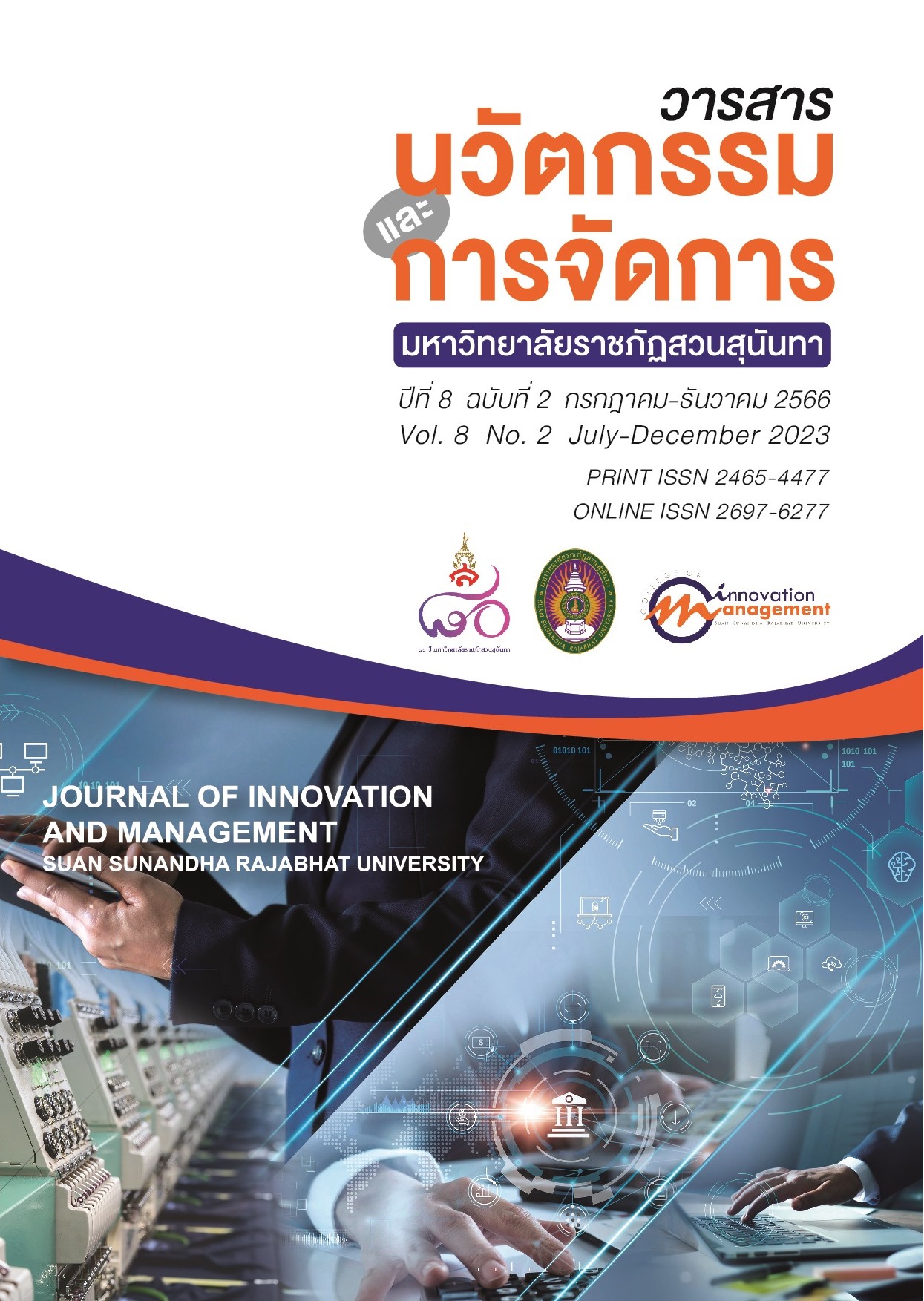Social Innovation: The Study of Social Credit in China for Applicable Model in Thailand
Keywords:
Social Innovation, Social Credit, LearningAbstract
The objectives of this research were (1) to study the development of Social Credit in China, (2) to study Social Credit in China nowadays, and (3) to present the model that will be applied in Thailand based on actual possibility. The research method is documentary research, which is conducted by gathering information and using various documents to review the content of social innovation and, finally, propose a model of social credit that will be applied in Thailand. The criteria for choosing documents are (1) Authenticity, (2) Credibility, (3) Representativeness, and (4) Meaning. The researcher proceeds with the document review by managing the documents with the narrative procedure and assessment quality comprising 20 Thai and 10 foreign language literature. The summary of the literature percentage is as follows: (1) Literature for Social Credit Development is 6 items (20%), (2) Literature for Learning Impact of Social Credit has 5 items (16.67%), (3) Literature for Cause and Effect for Solving Social Credit Problems has 5 items (16.67%), (4) Literature for Training Development has 4 items (13.33%), and (5) The literature for Paradigm Thinking to apply for Social Credit in Thailand is 10 items (33.33 %). The researcher presents the model of the Social Credit System which will be used in the context of Learning Dynamic in Thailand are (1) Core Responsible Organization, (2) Registration System, (3) Organized Training, (4) Standard Setting under good governance guidelines, (5) Giving Rewards in terms of Social Credit Score, (6) Annual Evaluation, and (7) Sustainable Development for social tranquility.
References
Bloom, B.S. (Ed.). Engelhart, M.D., Furst, E.J., Hill, W.H., Krathwohl, D.R. (1956). Taxonomy of
Educational Objectives, Handbook I: The Cognitive Domain. New York: David McKay.0
Herkema, S. (2003). A Complex Adaptive Perspective on Learning with in Innovation Projects. The Learning Organization, 10(6), 340-346.
Kasl, F. (2019). Surveillance in Digitalized Society: The Chinese Social Credit System from a European Perspective. [Online]. Retrieved from: www.ilaw.cas.cz/tlq
Kostka, G. (2019). China’s social credit systems and public opinion: Explaining high levels of approval. [Online]. Retrieved from: http://dx.doi.org/10.2139/ssrm.3215138
Maslow, A. H. (1954). Motivation and Personality. New York: Harper and Row.
Scott, J. (1990). A matter of record: Documentary sources in social research. Cambridge: Polity press.
Schumpeter, J. A., (1934). The Theory of Economic Development: An Inquiry into Profits, Capital, Credit, Interest, and the Business Cycle. New York: Transaction Publishers.
Schumpeter, J. A. (1942). Capitalism, Socialism and Democracy. New York: Harper & Row.
Thomas, H. (1987). The Social Construction of Technological Systems: New Directions in the sociology and History of Technology. Cambridge: M.I.T. Press.
Tosanguan, K. (2019). The History of China’s Government. Panyapiwat Journal, 11(1), 315-329.
Woesler, M., Warnke, M., Kettner, M., and Lanfer, J. (2021). The Chinese Social Credit System. Origin, political design, exoskeletal morality, and comparisons to Western systems. European Journal of Interdisciplinary Studies, 2, 7-35.
Downloads
Published
How to Cite
Issue
Section
License
Copyright (c) 2023 Journal of Innovation and Management

This work is licensed under a Creative Commons Attribution-NonCommercial-NoDerivatives 4.0 International License.
See Publication Ethics https://so03.tci-thaijo.org/index.php/journalcim/Ethics






